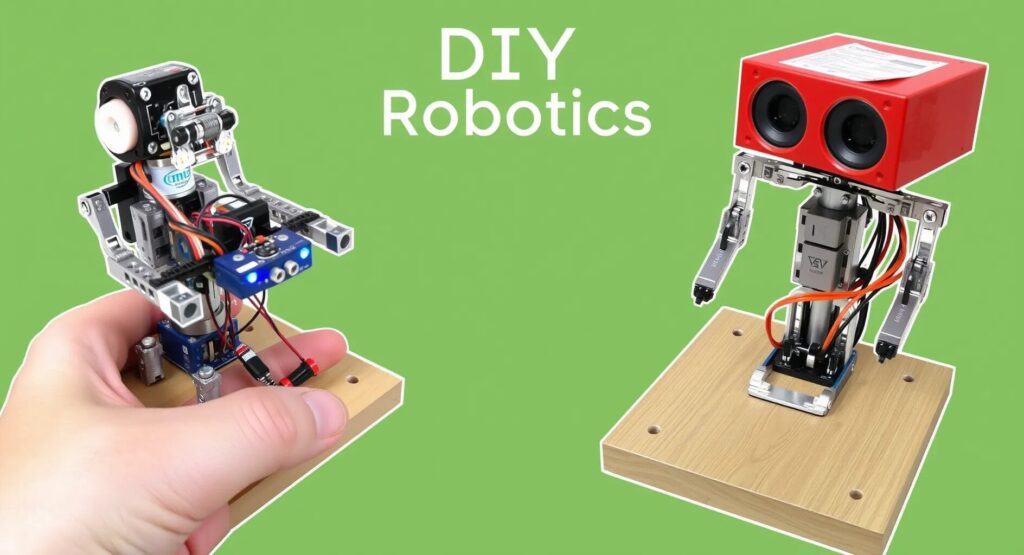
Probabilistic Programming Languages: The Game-Changer in AI Development
Pprobabilistic programming languages (PPLs) are changing the way AI developers tackle problems that involve randomness and incomplete information. In fact, they’re becoming a revolutionary force in AI development, enabling more intuitive, powerful, and flexible models for everything from healthcare predictions to autonomous systems.
This emerging technology is not just a niche tool for researchers anymore; it’s something with the potential to transform industries, influencing everything from finance to robotics. So, let’s dive into why these languages are so groundbreaking!
What is Probabilistic Programming?
Probabilistic programming is a paradigm shift. Traditional programming follows a rigid, rule-based system. Probabilistic programming allows developers to define uncertainties and draw conclusions from uncertain data.
Instead of coding every possible outcome, these languages use probabilistic models to simulate uncertainty, giving AI the ability to handle real-world unpredictability with grace. It’s a bit like teaching your system to make educated guesses based on the information it has—just like we do.
Why Do We Need Probabilistic Programming Languages?
The world is messy. Decisions are rarely made with perfect knowledge, and that’s where PPLs shine. Traditional AI struggles with scenarios that involve a lot of randomness or ambiguity. With PPLs, developers can create adaptive systems that make sense of complex, real-world data. For example, predicting stock prices or diagnosing diseases—these are tasks steeped in uncertainty, where outcomes vary widely.
Plus, PPLs can improve accuracy in AI models. Instead of relying on hard-coded rules, models built with PPLs can continuously refine themselves as new data comes in.
Key Benefits of Probabilistic Programming in AI Development
When you look at the advantages of using probabilistic programming, it’s clear that these languages aren’t just a temporary trend. They’re offering genuine breakthroughs:
- Simplifies complex models: PPLs allow developers to express complicated mathematical models in fewer lines of code.
- Improves decision-making: Since PPLs naturally handle uncertain data, they help AI systems make smarter decisions under unpredictable circumstances.
- Flexible and adaptive: AI systems built with PPLs are far more flexible because they can learn from uncertainty.
- Scalable solutions: PPLs are ideal for large-scale systems that need to process massive amounts of data, making them an ideal fit for industries like healthcare, finance, and logistics.
- Integration with machine learning: These languages complement machine learning models, giving them a new layer of capability when handling probabilistic reasoning.
The Role of Probabilistic Models in AI

The core of any PPL is its use of probabilistic models. These models don’t just crunch data; they evaluate probabilities. Think of it like AI looking at a handful of possible futures and choosing the most likely one. It’s incredibly useful when predicting outcomes that aren’t 100% certain.

This diagram can help visualize how probabilistic models define uncertainties and predict outcomes in AI. It shows how different variables in a model interact probabilistically, making it easier to understand how AI makes decisions based on uncertain inputs.
For instance, in healthcare, a probabilistic model might evaluate a range of possible diagnoses and provide the most probable ones based on a patient’s symptoms. This flexibility gives AI a real advantage in making high-stakes decisions where accuracy is vital.
Examples of Probabilistic Programming Languages
Several probabilistic programming languages have already made a mark in the field. Each offers its own unique features, but all share the goal of simplifying and enhancing AI development.
- Stan: A general-purpose PPL designed for Bayesian inference. It’s widely used in statistical analysis and machine learning.
- PyMC3: Built on Python, this PPL is highly flexible, integrating smoothly with existing machine learning workflows.
- TensorFlow Probability: As an extension of TensorFlow, this PPL allows users to perform probabilistic reasoning directly within TensorFlow’s environment, making it easier to integrate with deep learning models.
- Edward: A library that extends TensorFlow and focuses on probabilistic models and machine learning. It’s great for researchers looking to experiment with cutting-edge ideas.

Each of these languages brings something different to the table, allowing AI developers to build powerful, intuitive systems that can handle uncertainty efficiently.
How Probabilistic Programming Enhances Machine Learning
Probabilistic programming is not just for niche AI applications—it directly impacts machine learning as well. When combined with traditional machine learning techniques, PPLs can enhance the interpretability and accuracy of models.

A key feature of PPLs is their ability to integrate prior knowledge into machine learning models. This allows the AI system to make better predictions by considering past data, improving overall performance. Instead of relying solely on training data, the model can weigh new information against established knowledge, making smarter predictions.
In essence, probabilistic programming gives AI better judgment—a valuable asset in an unpredictable world!
Potential Applications in Real-World AI Systems

The flexibility and power of PPLs make them invaluable in a variety of sectors. Let’s explore a few of the most promising applications where PPLs could drive future innovations:
- Autonomous vehicles: Self-driving cars operate in environments filled with uncertainty—changing weather, traffic patterns, unexpected obstacles. PPLs can help these systems make safer, more reliable decisions in real time.
- Medical diagnosis: With a probabilistic approach, AI systems can provide more accurate predictions for patient outcomes based on a wide array of uncertain variables, including patient history, environmental factors, and genetic predispositions.
- Financial forecasting: The stock market is a prime example of unpredictability, where a multitude of factors influence outcomes. Probabilistic models can help identify investment opportunities while mitigating risks.
- Robotic control: Robots must often work in unpredictable environments. By leveraging probabilistic programming, developers can create robots that react more intelligently to their surroundings, improving functionality in industries like manufacturing or warehousing.

This decision tree represent how AI systems, such as autonomous vehicles or financial forecasting tools, use probabilistic programming to weigh different actions based on uncertain inputs and their likely outcomes.
Challenges and Limitations
While PPLs offer immense potential, they’re not without their challenges. For one, scalability can be an issue. Large-scale models require significant computational power, which might be out of reach for smaller companies or projects.
Another challenge is the learning curve. PPLs can be more complex than traditional programming languages, and mastering them requires a strong understanding of both statistics and probability theory.
How Probabilistic Programming Transforms Predictive Modeling
Predictive modeling is a key component of AI, and probabilistic programming languages (PPLs) add a whole new dimension to it. In traditional methods, predictive models work well when data is plentiful and patterns are clear, but when data is noisy, incomplete, or uncertain, they struggle.

Here’s where PPLs step in—they account for that uncertainty, making them especially useful in situations where outcomes are influenced by numerous unpredictable factors. For example, forecasting customer behavior, such as the likelihood of a purchase, often involves many variables that are difficult to model precisely. PPLs, however, can represent the likelihood of various outcomes and make more nuanced predictions.
Moreover, these languages let developers integrate domain expertise directly into the models. This means businesses can customize their AI systems to their unique needs, allowing for more reliable and actionable insights.
Why Probabilistic Programming is Essential for AI Ethics
Ethics in AI is an ongoing concern. Many fear that AI systems are opaque, making decisions that even their creators don’t fully understand. Probabilistic programming can be part of the solution. It forces developers to think more critically about uncertainty and biases in their models, providing a transparent framework for decision-making.
For instance, in healthcare AI, PPLs enable models to account for variations in populations, such as genetic diversity or socio-economic factors, reducing the risk of biased predictions. Similarly, in criminal justice applications, PPLs allow systems to better account for uncertainty in the data, which can help prevent biased decision-making based on incomplete or skewed datasets.
Incorporating probabilistic reasoning ensures AI systems are more accountable and adaptable, which is crucial for ethical AI development.
The Future of AI with Probabilistic Programming
The future of AI development looks incredibly promising, largely due to the growing influence of probabilistic programming languages. As more developers and companies adopt these languages, we’re likely to see a shift in how AI handles uncertainty, making it more adaptable and capable.

One significant area of future development lies in explainable AI (XAI). Probabilistic models naturally lend themselves to transparency, offering clearer justifications for the decisions they make. This could lead to more trustworthy AI systems, particularly in sensitive fields like healthcare, finance, and law.
Moreover, as computational resources improve, the barriers to entry for using PPLs will lower. This means that even small startups or independent developers could harness the power of probabilistic programming to create innovative AI solutions. The next decade may see PPLs become an integral part of everyday AI, transforming industries that rely heavily on data-driven decision-making.
Tools and Libraries to Get Started with Probabilistic Programming
If you’re intrigued by the possibilities and want to experiment with probabilistic programming yourself, you’re in luck. There are several tools and libraries designed to make it easier for developers to get started. Most of these tools integrate seamlessly with popular programming environments, so you don’t need to learn an entirely new language from scratch.
Here are some of the most popular options:
- Pyro: A PPL built on PyTorch, it’s great for deep probabilistic modeling and works well with neural networks. Pyro is designed to be flexible, making it perfect for both researchers and production use.
- BUGS (Bayesian inference Using Gibbs Sampling): One of the oldest and most widely used tools for Bayesian statistical modeling. It’s well-suited for complex models in fields like biology and epidemiology.
- Turing.jl: Built on Julia, Turing is a fantastic option for high-performance probabilistic programming. Julia itself is a language designed for performance, making Turing ideal for large-scale models.
- Infer.NET: A machine learning framework developed by Microsoft, Infer.NET is designed for Bayesian inference and supports probabilistic programming in both research and enterprise-level applications.
These tools make it easier to prototype models, experiment with different approaches, and ultimately build AI systems that can handle uncertainty with far more grace than traditional programming methods.
Probabilistic Programming in AI Research
The academic world has been buzzing with excitement over probabilistic programming for the past decade. Leading universities and research institutions are actively exploring how PPLs can push the boundaries of machine learning, data science, and statistical modeling.
A growing body of research is focused on how PPLs can improve Bayesian inference, a statistical technique used to update the probability estimate of an event as new evidence is introduced. Bayesian methods have long been at the heart of AI research, and PPLs are making these methods more accessible to a broader range of applications.
Another emerging area is the development of automated inference engines. These engines make it easier to perform probabilistic reasoning without requiring developers to manually design every element of the inference process. This automation could open up probabilistic programming to even more developers, further accelerating its adoption in AI research and beyond.
When Should You Use Probabilistic Programming?
With all the excitement around PPLs, it’s important to remember that they aren’t a universal solution. In fact, there are plenty of situations where traditional programming is still the best approach. For simpler, more deterministic problems, using a PPL may introduce unnecessary complexity.
However, for complex, uncertain environments, probabilistic programming shines. When should you reach for a PPL? Here are some ideal scenarios:
- When dealing with uncertainty: If your problem involves randomness or incomplete data, probabilistic programming can model these uncertainties more effectively than traditional methods.
- Complex dependencies: PPLs excel at modeling systems where many factors influence the outcome in unpredictable ways, such as in climate modeling or disease spread predictions.
- Iterative learning: If your system needs to learn and adapt over time as new data comes in, PPLs provide a framework for continuously updating the model’s understanding of probabilities, making them ideal for dynamic environments like financial markets.
- Bayesian inference: Whenever you need to perform Bayesian inference, PPLs make this process far more accessible and intuitive. They allow for more nuanced predictions by incorporating prior knowledge and new evidence.
In short, if you’re working on high-stakes AI systems where uncertainty is a major factor—like robotics, healthcare, or economic forecasting—probabilistic programming is a game-changer.
Combining Probabilistic Programming with Deep Learning
One of the most exciting developments in AI is the combination of probabilistic programming with deep learning. This hybrid approach offers the best of both worlds: the powerful pattern recognition of deep learning models, enhanced by the ability to reason under uncertainty from probabilistic methods.
For example, deep learning models are often used in computer vision or natural language processing, but they struggle with making uncertain decisions. By incorporating probabilistic reasoning, developers can build systems that not only classify images or interpret text but also provide confidence levels for their predictions.
This fusion is becoming increasingly popular in fields like reinforcement learning and autonomous systems. Think about self-driving cars—they not only need to identify obstacles but also assess how likely a pedestrian is to move into their path. Adding probabilistic reasoning to deep learning makes the car’s decision-making process much more robust in real-world, uncertain environments.
Skills Needed to Master Probabilistic Programming
If you’re inspired to dive into probabilistic programming, there are a few key skills you’ll want to develop:
- Strong mathematical foundation: Understanding concepts like probability theory and Bayesian statistics is crucial. Many of the algorithms in PPLs are deeply rooted in these fields.
- Familiarity with AI frameworks: Since many probabilistic programming libraries build on popular AI frameworks like TensorFlow or PyTorch, having a good grasp of these systems will help you implement probabilistic models more effectively.
- Statistical modeling skills: Knowing how to build and evaluate statistical models will give you a strong advantage, especially in scenarios where uncertainty plays a central role.
- Problem-solving mindset: Probabilistic programming requires a creative, adaptive approach to problem-solving. You’ll need to think beyond fixed rules and explore how different scenarios and probabilities affect your models.
Final Thoughts on Probabilistic Programming’s Role in AI
The rise of probabilistic programming languages marks a new frontier in AI development. By giving machines the ability to reason under uncertainty, PPLs are pushing AI into uncharted territories—enabling it to tackle problems that traditional programming just can’t handle.
Whether you’re working on high-stakes systems that require flawless decision-making or experimenting with cutting-edge machine learning models, probabilistic programming is a valuable tool in the AI developer’s toolkit. It’s reshaping the landscape, creating more adaptable, ethical, and intelligent systems for the future.
As the AI industry continues to evolve, PPLs will undoubtedly play a key role in driving innovation, helping machines make better decisions in a world that’s anything but certain.
Resources for Learning Probabilistic Programming
If you’re eager to explore probabilistic programming further, there are many excellent resources to help you get started, ranging from beginner-friendly tutorials to advanced research papers. Below are some of the best options to deepen your understanding of this powerful paradigm.
Books and Reading Materials
- “Bayesian Data Analysis” by Andrew Gelman
This is a foundational book for learning Bayesian statistics, a core concept behind many probabilistic programming languages. It’s great for understanding how Bayesian thinking is applied to real-world problems. - “Probabilistic Programming and Bayesian Methods for Hackers” by Cameron Davidson-Pilon
A highly readable and approachable guide to both Bayesian methods and probabilistic programming, this book is also available for free online. It uses Python and PyMC3 to teach you how to build models with uncertainty in mind. - “Pattern Recognition and Machine Learning” by Christopher M. Bishop
This text dives deep into machine learning and probabilistic approaches. It’s slightly more advanced, but it’s perfect for those who want to integrate probabilistic methods with ML algorithms. - “Bayesian Reasoning and Machine Learning” by David Barber
This book covers many probabilistic machine learning models, providing a solid foundation for understanding how probabilistic programming integrates with modern AI systems.
Online Courses
- Stanford University’s “Probabilistic Graphical Models” (Coursera)
This course offers an introduction to graphical models that form the backbone of many probabilistic programming frameworks. It covers inference algorithms, Bayesian networks, and Markov models. - “Introduction to Bayesian Inference and Decision” by Carnegie Mellon University
A free online resource that covers Bayesian statistics and decision theory in depth, this course is ideal if you want to understand the mathematics behind probabilistic programming. - “Bayesian Statistics: From Concept to Data Analysis” (Coursera)
This course provides a step-by-step guide to learning Bayesian statistics. It’s suitable for beginners and those looking to refresh their understanding of how these methods apply to programming.
Frameworks and Libraries Documentation
- PyMC3 Documentation
PyMC3 is one of the most popular Python libraries for probabilistic programming. The official documentation is comprehensive and includes tutorials to get started with building Bayesian models.
PyMC3 Docs - Stan Documentation
Stan is widely used for Bayesian inference and is known for its scalability. The official documentation provides guides for beginners and advanced users alike, along with a large collection of example models.
Stan Docs - TensorFlow Probability Documentation
TensorFlow Probability is a powerful library for combining probabilistic models with deep learning. The official documentation contains numerous tutorials, examples, and explanations for building hybrid models.
TensorFlow Probability Docs - Pyro Documentation
Pyro is built on PyTorch and is designed for deep probabilistic modeling. Its documentation provides a great introduction to the library and examples of how to use it for AI projects.
Pyro Docs
Tutorials and Blogs
- “The Uncertainty Toolbox” (PyMC3 Blog)
PyMC3’s blog regularly publishes tutorials on probabilistic programming and the practical applications of Bayesian methods. It’s a great resource for learning how to model uncertainty in real-world problems.
PyMC3 Blog - “Introduction to Probabilistic Programming with Pyro”
This hands-on tutorial walks you through using Pyro for probabilistic modeling, covering the basics of deep probabilistic models and how to train them.
Pyro Tutorial - “Stan Tutorials”
The Stan community has created numerous tutorials ranging from beginner to advanced, covering a wide range of topics including Bayesian inference, hierarchical models, and Markov Chain Monte Carlo (MCMC) methods.
Stan Tutorials
Research Papers
- “Probabilistic Programming: A Future for AI” by Gordon et al.
This research paper outlines the principles behind probabilistic programming and its potential to revolutionize AI development. It’s a great resource for understanding how PPLs are expected to shape the future of AI. - “Automatic Differentiation Variational Inference” by David M. Blei, Alp Kucukelbir, and Jon D. McAuliffe
This paper is useful for those interested in how probabilistic programming intersects with variational inference and automatic differentiation, two important techniques in machine learning.
GitHub Repositories
- PyMC3 GitHub
Explore the PyMC3 source code and examples on GitHub. The repository includes issues, discussions, and contributions from a thriving community.
PyMC3 GitHub - TensorFlow Probability GitHub
TensorFlow Probability’s GitHub page is a fantastic resource for exploring how the library is built, along with real-world examples and issues.
TF Probability GitHub - Pyro GitHub
The Pyro GitHub repository includes the latest updates and example models. You can contribute, explore issues, or just experiment with the code.
Pyro GitHub





